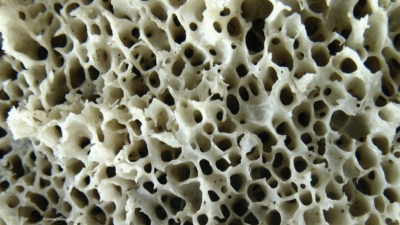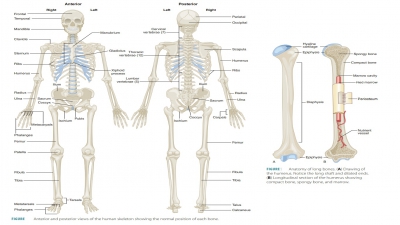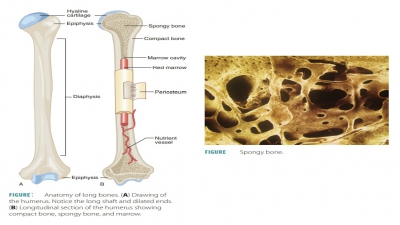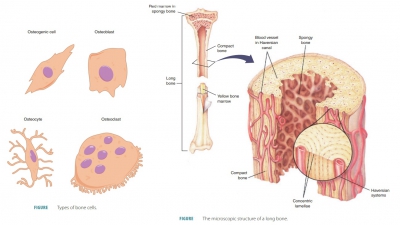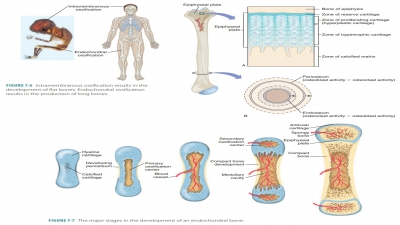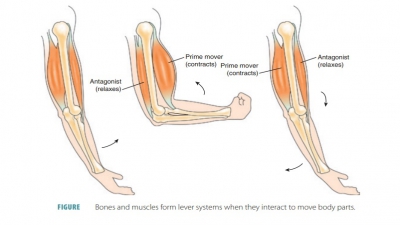Summary - Integumentary System
| Home | | Anatomy and Physiology | | Anatomy and Physiology Health Education (APHE) |Chapter: Anatomy and Physiology for Health Professionals: Support and Movement: Integumentary System
The skin is also known as the integument, which means “covering.” The integumentary system consists of the skin and its accessory structures (hair, nails, glands, muscles, and nerves).
Summary
The skin is also known as the integument, which means “covering.” The
integumentary system consists of the skin and its accessory structures (hair,
nails, glands, muscles, and nerves). The skin is the largest organ of the body
in surface area and weight. The major parts of the skin are the epidermis
(which is not vascularized) and the dermis (which is highly vascularized). The
subcutaneous layer (hypodermis) is deep below the dermis and not part of the
skin.
Keratinocytes and melanocytes are
the main cells in the epidermis. The keratinocytes produce keratin, which is
the fibrous protein that aids the epidermis in protecting the body. The
melanocytes produce melanin, which is the dark pigment that absorbs UV
radia-tion from sunlight. The epidermal layers, from deep to superficial, are
the stratum basale (also known as stra-tum germinativum), stratum spinosum,
stratum gran-ulosum, stratum lucidum, and stratum corneum. The stratum lucidum
is located only on the soles and palms.
The dermis consists of papillary
and reticular regions and lies between the epidermis and subcuta-neous layer.
The papillary region contains fine elas-tic fibers and dermal papillae. The
reticular region is composed of connective tissue containing collagen, elastic
fibers, fat tissue, hair follicles, nerves, sebaceous (oil) glands, and the
ducts of sweat glands. The color of skin is due to melanin, carotene, and
hemoglobin.
Skin functions include body
temperature regu-lation, protection, sensation, excretion, absorption, and the
synthesis of vitamin D. The skin participates in thermoregulation by liberating
sweat at its surface. The skin provides physical, chemical, and biological barriers
that help protect the body. Cutaneous sensa-tions include touch, hot, cold, and
pain.
Nails protect the ends of the
fingers and toes and are modifications of the epidermis that contain hard
keratin. Hairs (pili) project above the skin surfaces and are also dominated by
hard keratin. Hairs are basically classified as either vellus or terminal, with
terminal hairs being coarser, darker, and longer. Hair follicles have limited
growth cycles and usually begin to slow their activity when a person is in his
or her 40s. The skin contains two types of exocrine glands: sebaceous (oil) and
sudoriferous (sweat) glands.
The three primary skin barriers
are chemical, phys-ical, and biological. Chemical barriers include melanin and
skin secretions. Skin continuity and hardened kera-tinized cells create
physical barriers. Biological barriers include the dendritic cells (epidermal),
macrophages (dermal), and the body’s DNA. The skin is also import-ant for
regulating body temperature, providing touch reception, maintaining many
metabolic functions, stor-ing blood, and excreting a variety of substances.
The skin responds to injuries and
wounds with inflammation, which causes redness, increased warmth, and painful
swelling. Wound healing involves the pro-cesses of clotting, scabbing,
collagenous fiber formation, revascularization, phagocytosis, scarring, and
granula-tion tissue formation. Signs of skin aging usually appear when a person
is in his or her late 40s and include thinned gray hair, dry hair and skin,
thin and sagging skin, bleeding inside skin, easier bruising, slower heal-ing,
and recurring infections. Protecting the skin from excessive UV radiation
should continue throughout life to limit the amount of skin damage, wrinkling,
sagging, and unsightly marking that might occur.
The three types of skin cancers
are basal cell car-cinoma, squamous cell carcinoma, and malignant melanoma.
Malignant melanoma is the least common but most dangerous form because of its
tendency to metastasize quickly. Burns are caused by intense heat, chemicals,
electricity, or radiation that kills cells and denatures cell proteins. They
are the leading causes of accidental death, which actually occurs after the
burn due to dehydration, electrolyte imbalance, renal fail-ure, and circulatory
shock. First-degree burns most frequently occur from sunburns, whereas second-
degree burns are often from scalding or severe sun-burns. Third-degree burns
often require skin grafts and usually cause severe disfigurement.
Related Topics

